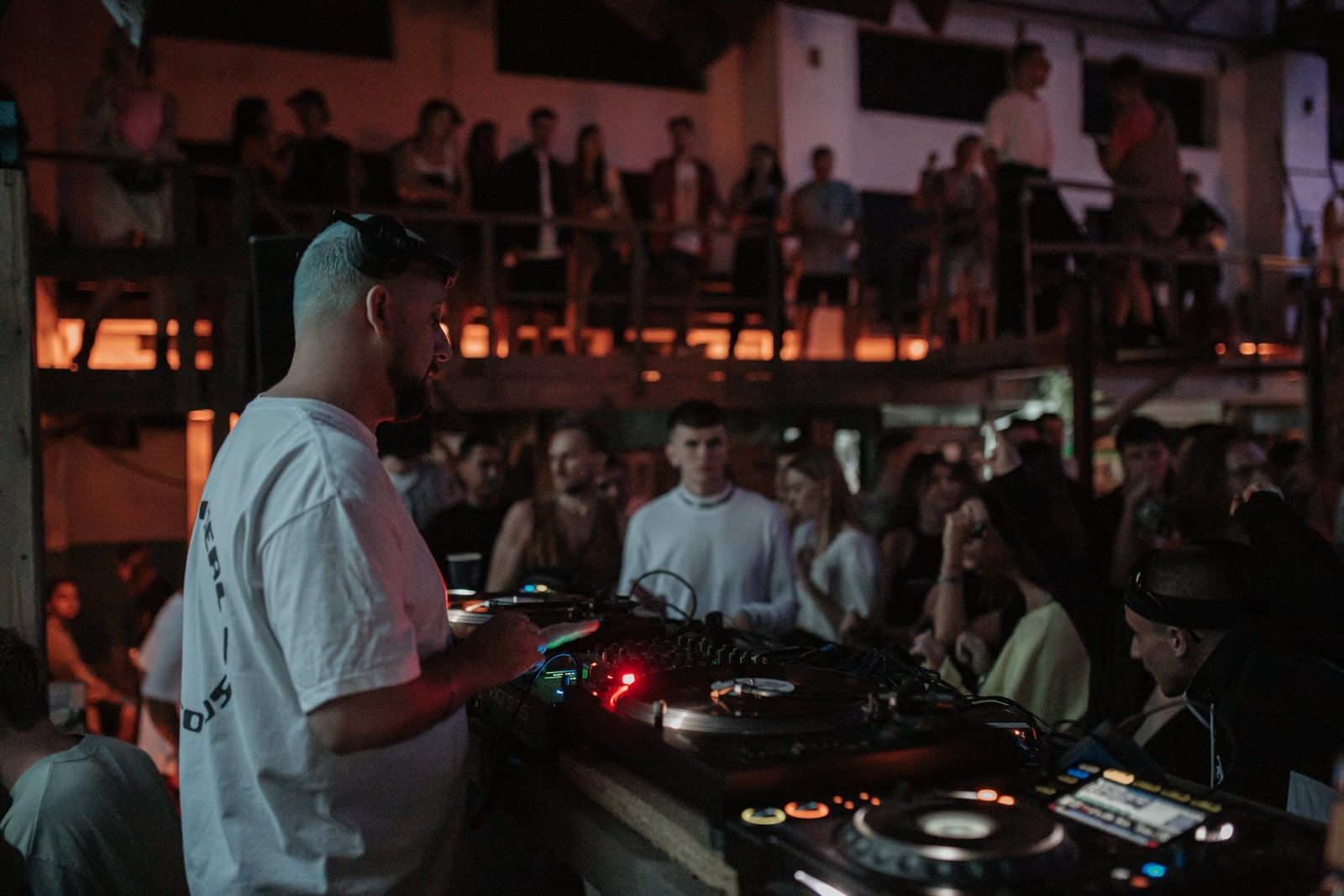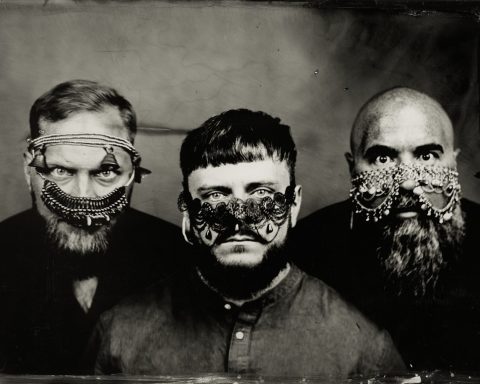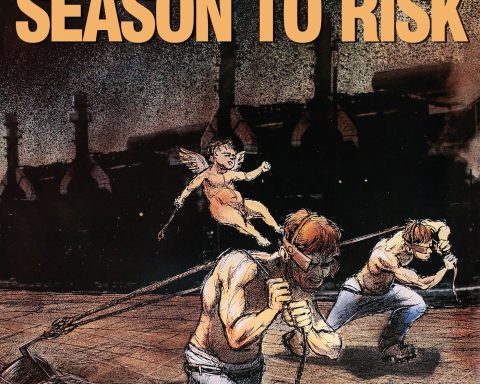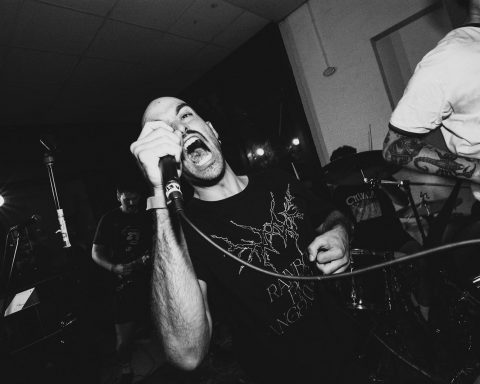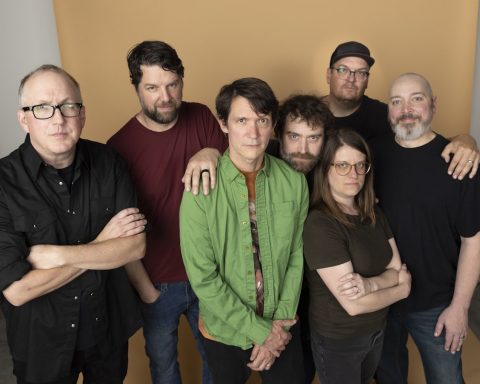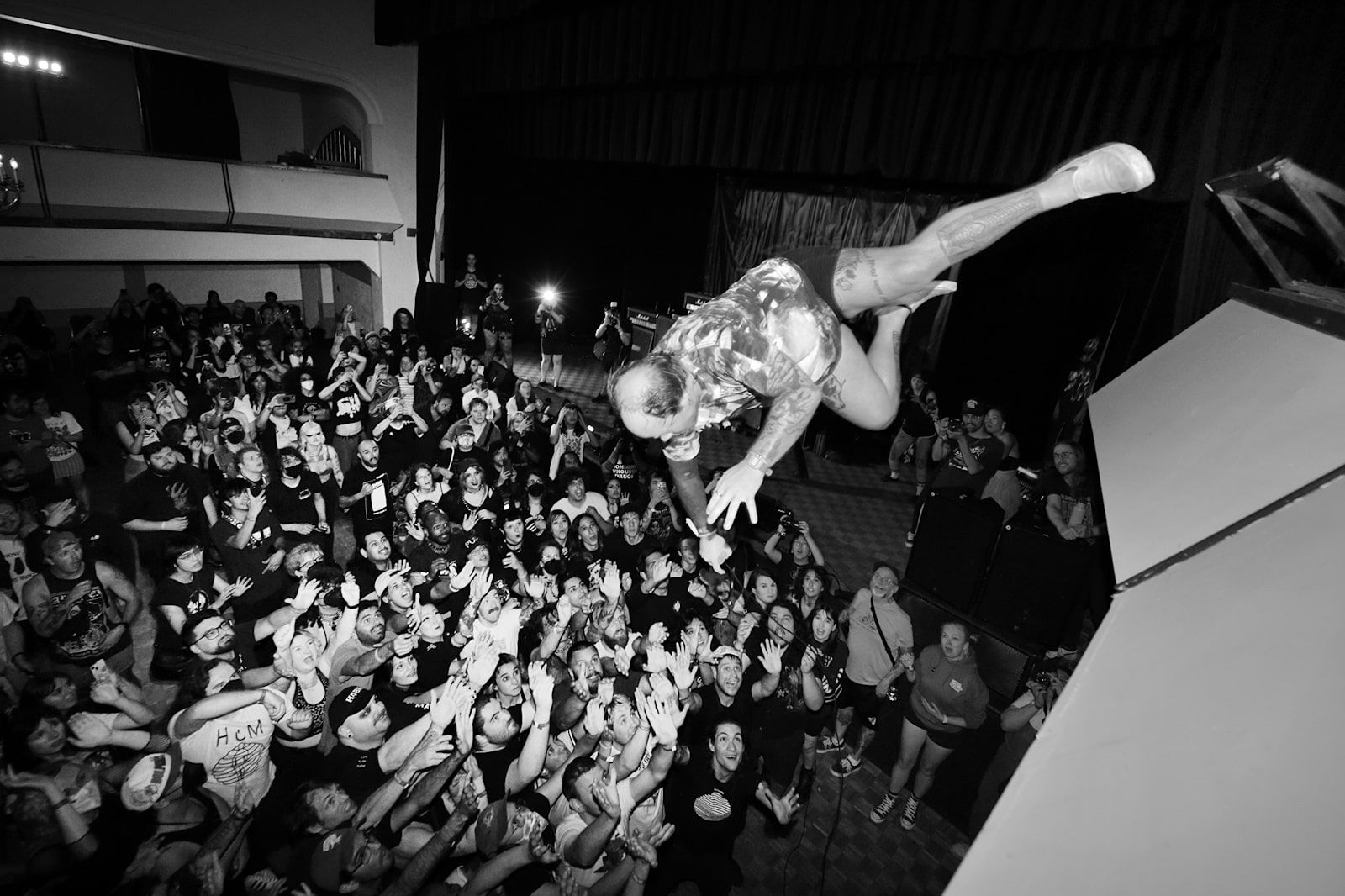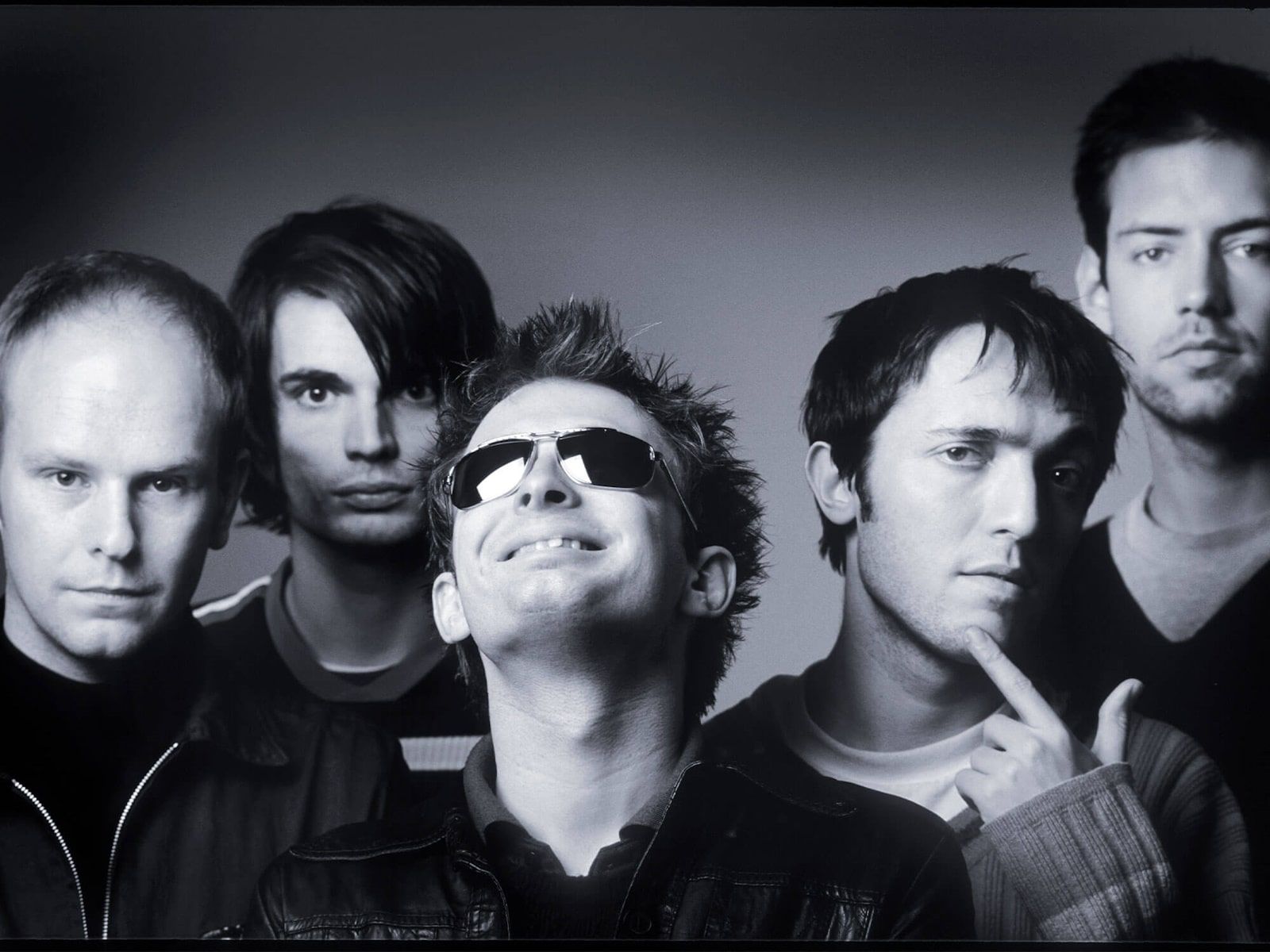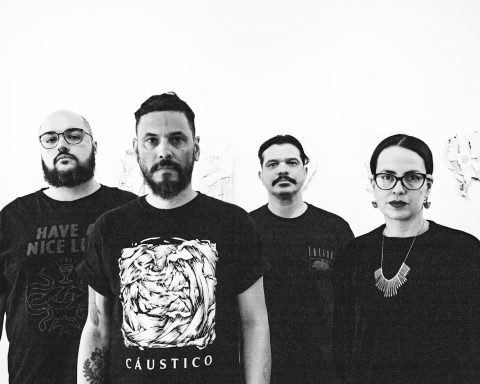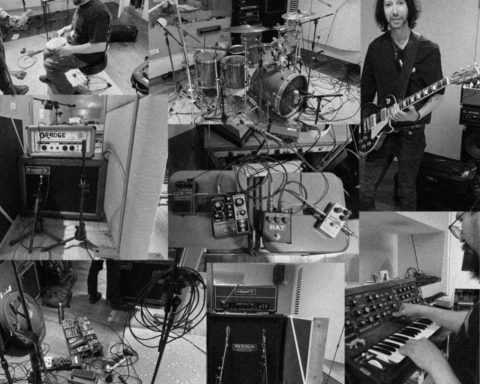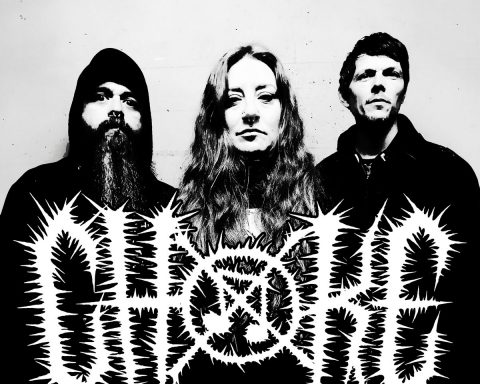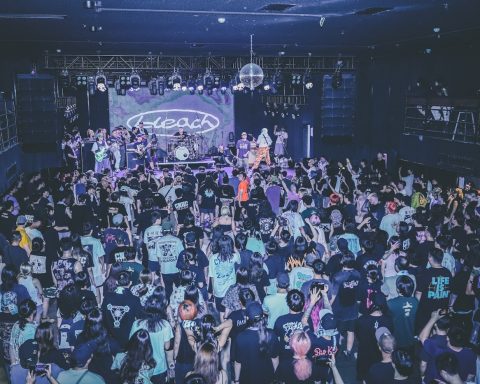It’s October 15, 2021, four months before the full-scale russian invasion of Ukraine. In Sloviansk, the city that has been under russian occupation for three months in 2014 and was near the frontline in October 2022, is hosting the Boiler Room through the efforts of the Shum.Rave initiative. The party becomes a true sensation for the Ukrainian East. Numerous Ukrainian and world media write their materials about the ‘Donbas DJs that go global.’
The event welcomes DJs from the eastern cities Severodonetsk, Kharkiv and Druzhkivka, and there are about 200 ravers from all over Ukraine among the listeners. The organizers share their ambitious plans in the interviews: festivals, Ukrainian tours, showcases, DJ school and other activities that were not destined to come to fruition in the East.
Author: Kseniia Yanus, translated by Nata Hrytsenko
‘For me Boiler Room in Sloviansk became an understanding that you can achieve any goal despite your circumstances or location. This event showed that small towns can be as progressive and influential on the country’s cultural map as Kyiv and others.’ — JM Dasha, DJ and ShumRave resident.
Yevhenii Skrypnyk, the founder of the Shum.Rave, was in Kyiv on February 24, 2022, the day the full-scale russian invasion began. On the same day he began volunteering actively, one of the areas being the help with evacuation from the eastern regions. Like for many others, cultural life has faded into the background for him for a while.
‘You cannot think about anything but how to help people. So I didn’t quite want to make music in the first month. Neither pick up instruments nor record anything,’ Yevhenii told back in the days.
But in May Shum.Rave has already released the ‘Друзі’ (‘Friends’) charity compilation with all of the tracks written during the great war. And in September they were holding a two-day Brave Culture Meet Up conference for representatives of Ukrainian creative industries. The conference was looking for an answer to the question, ‘What is the role of culture and art during the war?’
Similar dynamic was typical for many other members of the electronic scene in different niches: rapid development, forced pause, reboot and heyday.
Dnipro becomes a frontline city
Since 2016 the important hub of cultural life in Dnipro, an industrial megapolis on the banks of the Dnieper river, has been the Module art centre with its record studio, concert venue, DJ school, and later Dnipropop music label. In November 2021 Module held its last two farewell parties and shut down because of a pandemic-induced industry crisis. The team planned to rest for a while and reconsider what happened, and they began looking for a new location just in a month. But the russian invasion undid all the plans in one moment. Part of the team went to defend the country at the frontline, and the other began volunteering and supplying their friends with all the necessary things. Though it was impossible to relaunch Module as a concert venue, the Dnipropop label continued working.
‘We held two our last parties and then disassembled all our constructions in three days and moved them to the warehouses. Later, after the active war phase began, we gave away most of the construction materials and furniture to equip blindages, shelters for displaced persons and bomb shelters.’ — Yevhen Honcharov, co-founder of the Module club, Dnipropop label, and Abstract Beats Community.
In two years of the war Dnipropop residents toured throughout all Ukraine and released a lot of new records. One of the most interesting events was a concert in the Dnipro metro, a rave on the Vokzalna station that was held while the metro was open.
Dnipropop Under Ground, the rave at the Vokzalna station
One of the most remarkable wartime releases for the label became the longplay of the charity project warнякання by Anton Slepakov and Andrii Sokolov. The album features 20 spoken word tracks with slow-tempo IDM, and each track is a real story of Ukrainian present and a reflection on significant war events. The artists think of it as a therapeutic documentary project that is created in real time and serves as the comprehension and artistic reaction to the full-scale invasion of the russian occupation forces. The release became a kind of a group therapy for many listeners, and over 70 live performances were the sessions of the common emotional experience.
‘I felt like all the audience and the musicians on the scene were the single entity. It was a collective psychotherapy session, two and a half hours of reflection on the events after February 24. Anton has managed to thoroughly document emotions and moments that resonate for everyone. The ‘war’някання’ project is an important part of my life, and I believe that everyone should listen to their songs. These 23 tracks [of the album] ponder everything that we, Ukrainians, have seen and experienced during 2022–2023. You can look through all the photos of that period on your phone to remember, but you can also listen to this album.’ — Diana Dadonova, project manager of Music Export Ukraine.
Festivals and mainstream electronic music
For the mainstream electronic scene, the important events were the return of such large-scale Kyiv festivals like Strichka, Brave Factory and Black Factory. All three were held in the daytime (there’s a curfew at all of the Ukrainian territory except Zakarpatska oblast) and at one location, a revitalized ribbon-weaving factory in the historical Kyiv area Podil.
It was a traditional location for Strichka since 2014, but Brave Factory, one of the ten best world festivals in 2019 according to Resident Advisor, has opted out of building a large-scale festival area at the big location that hosted up to 8000 guests for the last few years.
Video footage from Strichka 2023
Each of the festivals can easily be called a celebration of urban culture and a true safe space for representatives of different communities. Festival line-ups included not only the artists all over Ukraine but also a lot of artists from the United States, France, Germany and other countries. Such gestures of support and solidarity didn’t remain unnoticed.
Charity compilations
Another act of support from colleagues abroad were charity music compilations.
Ukrainian Field Notes VA was a result of a long and painstaking process by Gianmarco Del Re, who conducted 170 interviews with Ukranian electronic and experimental artists since February 2022 and compiled them into a 600-page book. The book was accompanied by an 86-track compilation on the система | system label, and all the collected funds were donated to the Musicians Defend Ukraine charity fund that aims to help musicians at the frontline and those who suffered from the war.
UFN February 24, 2022-2023 // Book trailer from Gianmarco Del Re on Vimeo.
Belgian Side-Line magazine also didn’t stay away from the cause and released Electronic Resistance, two compilations of dark and gothic-oriented Ukrainian music, the first part of which remained in the Bandcamp genre top-lists for a long time.
The vivid selection of Ukrainian ambient electronics was presented as a charity compilation on the British label Flaming Pines, curated by one of the most famous Ukrainian electronic musicians Ihor Yalivec (Gamardah Fungus).
There were also a lot of domestic charity compilations. The musicians were consolidating geographically and genre-wise, and collaborated with their foreign colleagues.
Compilation by mystictrax, one of the most active Ukrainian electronic labels
Activation of the labels
In January 2023, an independent label OCHI started its work with their first compilation RESIDENTS MIXTAPE # 1. Now the label brings together 23 artists from different regions of Ukraine and also from the diaspora. Its founder and curator, Kharkiv DJ Dmytro Svitlov describes its concept as ‘uniting the community around the common idea, spreading various sound thanks to the wide geography of the residents.’
Though existing for only a year, the OCHI label already has 22 releases and 2 compilations. New releases come out each Saturday, and future ones are planned for six months ahead.
‘I only have to hear two or three seconds in a few places of a track to understand all about it and to know whether I like it or not. It’s also enough to feel if the track represents the label’s philosophy that I feel very well but cannot describe with words sometimes. It all happens irrationally, on my sensations,“ Dmytro tells.
The Mystictrax label stirred up notably as well. The project by Volodymyr Baranovsky (Lostlojic) was initially conceived as a mystification, a label seemingly shipping its radioactive cassettes straight from Chornobyl. But lately it has altered its concept and direction. Nowadays the label focuses on releasing the multigenred electronic music with essential mystic and futuristic components.
Mystictrax experiments with physical release formats all the time, such as exotic floppy disks, USB flash drives, and audio cassettes. The label’s discography has 30 various releases in total, featuring albums, compilations and EPs.
Clubs, radio and media
Apart from the new electronic labels, there were new venues opening since the beginning of the great war, such as industrial club Ences in Kyiv, Center of a New Culture in Kharkiv, and even an online radio station. Two days before the full-scale invasion, Kharkiv art platform Kultura Zvuku launched a media platform Gasoline in Kyiv, though they could go on air only in May 2022.
During its existence the team produced more than a thousand airs, author’s programs and live sessions by musicians playing in different genres. The most remarkable was the documentary ‘Спадок’ (‘Legacy’) about music legacy of Hutsulshchina. The team travelled to the Carpathians to document the musical landscape of the mountains. The result also included the records of traditional singing, music and environmental noises that were compressed into a sample pack, and the latter was used to create a compilation of Ukrainian electronic artists.
Another important event for the electronic scene was the launch of MixMag, the first media about electronic music in Ukraine. Kyiv music agency Go West Bureau has bought the franchise of the iconic British magazine. A media platform to unite both DJs and underground and pop artists finally appeared, fulfilling their audience’s request for the news.
‘As the newest location for the world’s biggest dance music and media brand, Mixmag Ukraine will give hope, inspiration, ambition and motivation to Ukraine’s DJs, producers, promoters, dancers, clubbers, party-people and fans of electronic music,“ Mixmag’s Global Managing Director Nick Stevenson tells.
There’s really a lot to write about, and the amount of information that Ukrainian electronic scene creates goes beyond the capacity of any one editorial board or text to understand and describe it all. We hope to have another possibility to address this topic and to delve deeper into some of its aspects.
This publication was created with support of the Ukrainian Institute. The views and opinions expressed in this publication are those of the authors and do not necessarily reflect the official position of the institution.
The Ukrainian Institute is a state institution acting in the field of cultural diplomacy. The institution’s activities are aimed at improving the understanding and perception of Ukraine in the world and the development of its cultural ties with other countries. Established by the Government of Ukraine, the Institute operates under the administration of the Ministry of Foreign Affairs.



